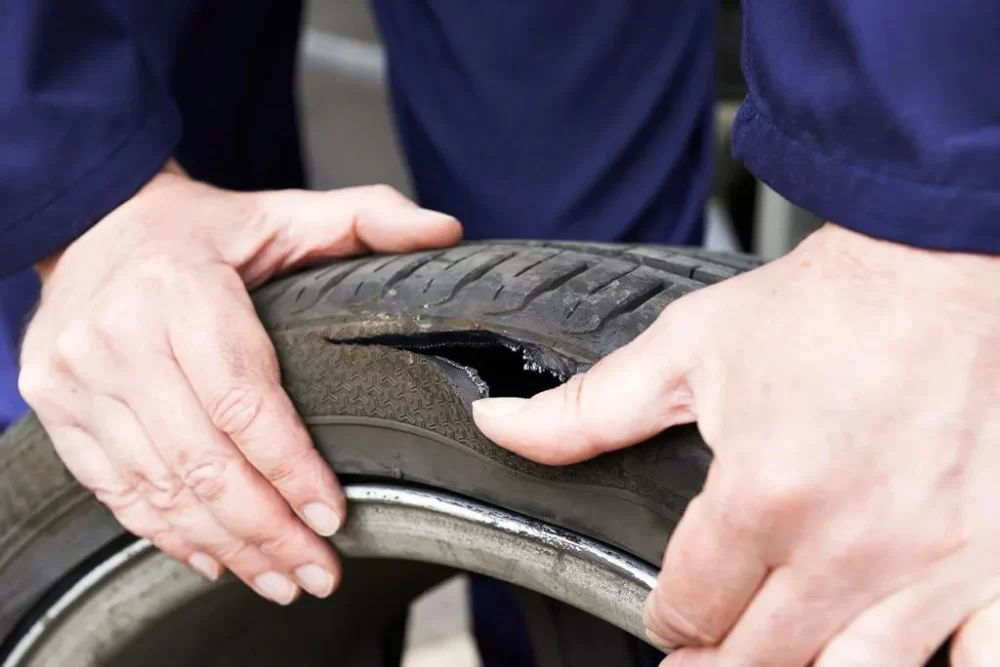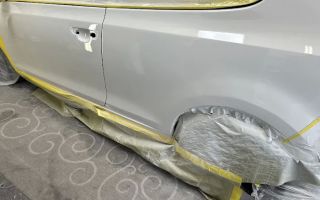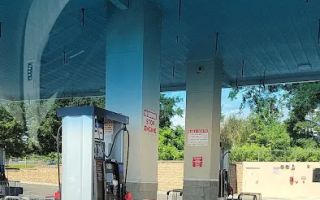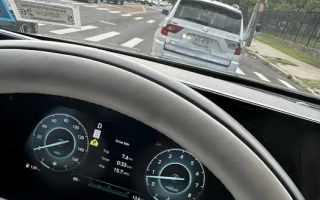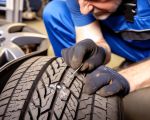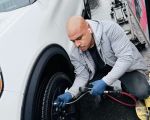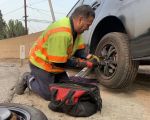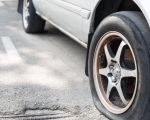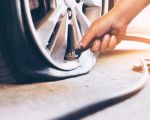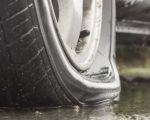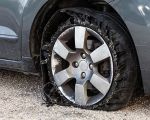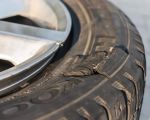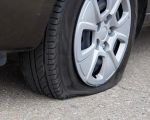How Tire Punctures Lead to Blowouts Over Time: A Detailed Analysis
As a vehicle owner, I've always understood that tire maintenance plays a crucial role in ensuring the safety and longevity of my car. One thing that caught my attention, however, was how something as seemingly simple as a tire puncture could lead to a blowout over time. It wasn’t until I encountered this issue myself that I realized just how dangerous a punctured tire could be if left unchecked. Let me walk you through what I learned about the process and the real dangers of tire punctures.

MR. TIRE INC.
2078 New York Ave, Huntington Station, NY 11746, USA
1. The Initial Puncture: A Small Hole with Big Consequences
It all begins with a simple puncture. This could be caused by something as small as a nail, a shard of glass, or even a piece of metal on the road. At first glance, a puncture might seem insignificant, especially if it’s small and doesn't cause an immediate deflation of the tire. But this is where the problem starts. The puncture weakens the tire, and while the car may still run, the stress on the affected area increases as the vehicle continues to move.

MR. TIRE INC.
2078 New York Ave, Huntington Station, NY 11746, USA
2. Air Pressure and its Role in Tire Health
When a tire gets punctured, the air inside it gradually escapes. Initially, this might happen slowly, and you might not even notice the change. However, over time, the pressure inside the tire drops, which reduces the tire’s ability to function properly. A tire that’s under-inflated is more prone to overheating and wearing out unevenly, causing further damage to the structure of the tire. As the air escapes, the integrity of the tire becomes more compromised, setting the stage for a potential blowout.
3. The Accumulation of Stress: How Minor Damages Lead to Major Problems
The key to understanding why a punctured tire can lead to a blowout lies in the accumulation of stress over time. As the tire continues to lose air, the walls of the tire flex more than they were designed to. The constant flexing weakens the rubber, and the steel belts inside the tire can start to shift or fray. This gradual weakening of the tire structure is a ticking time bomb that eventually leads to the tire bursting under the pressure of normal driving conditions.
4. Heat Build-Up: The Silent Killer
One of the main contributors to a tire blowout is heat. When a tire is under-inflated due to a puncture, the friction between the road and the tire increases. This increased friction generates more heat, which further weakens the rubber. Over time, the heat can cause the tire’s structure to deteriorate rapidly. The tire’s sidewalls are particularly vulnerable to this heat buildup, and as they weaken, they are less able to handle the pressure exerted on them by the vehicle’s weight and the road conditions.
5. Driving Conditions Amplify the Risk
It’s important to understand that driving conditions play a major role in how quickly a puncture leads to a blowout. For instance, if you're driving on rough, uneven roads, or if you’re constantly driving at high speeds, the stress on the tire increases. In these conditions, the weakened tire from the puncture faces even more strain, accelerating the process of deterioration. The combination of heat, stress, and pressure can cause the tire to rupture without warning, often resulting in a sudden blowout that could lead to a dangerous situation on the road.
6. The Tire’s Structural Integrity Fails
As the puncture continues to affect the tire over time, the structural integrity of the tire eventually fails. The puncture site can start to spread as the rubber weakens, and the steel belts inside may also start to unravel. This compromises the tire’s ability to hold its shape, and in some cases, it can cause the tire to bulge or even rupture entirely. When this happens, you’re left with a blowout, and the results can be catastrophic, especially if you're driving at high speeds or on a busy highway.
7. The Impact of Puncture Repairs and When to Replace a Tire
If you’ve had a puncture, it’s crucial to understand that not all punctures can be repaired. While minor punctures in the tread area can be patched or plugged, punctures in the sidewall or larger punctures may render the tire unsafe. A tire repair is a temporary solution, and it’s important to monitor the tire for any signs of further damage. If the tire shows any signs of bulging or uneven wear, it’s best to replace it as soon as possible to avoid the risk of a blowout.
8. The Importance of Regular Tire Inspections
Preventing a blowout starts with regular tire maintenance. Even if you don’t notice any obvious damage, it’s important to check your tires periodically for signs of punctures or wear. Look for small objects embedded in the tread, cracks, or bulges on the sidewall. Also, don’t forget to check the tire pressure regularly. Proper tire inflation is crucial for tire longevity, and keeping your tires properly inflated reduces the risk of blowouts caused by punctures. If you're unsure about the condition of your tires, it’s always a good idea to have them inspected by a professional.
9. What to Do When a Blowout Happens
Despite all the precautions, sometimes blowouts are inevitable. If you experience a blowout while driving, the most important thing is to remain calm. First, grip the steering wheel firmly and steer the car straight. Avoid slamming on the brakes, as this can cause you to lose control. Gradually slow down and pull over to a safe area. Once stopped, turn on your hazard lights and call for roadside assistance if necessary. Always have a spare tire, jack, and tools in your vehicle so that you can change the tire if needed.
Understanding how tire punctures lead to blowouts over time has given me a deeper appreciation for regular tire maintenance. A small puncture may seem harmless at first, but over time, it can cause significant damage to the tire, eventually leading to a dangerous blowout. By staying vigilant and proactive about tire care, I’ve been able to reduce the risk of encountering such issues, ensuring a safer driving experience.

